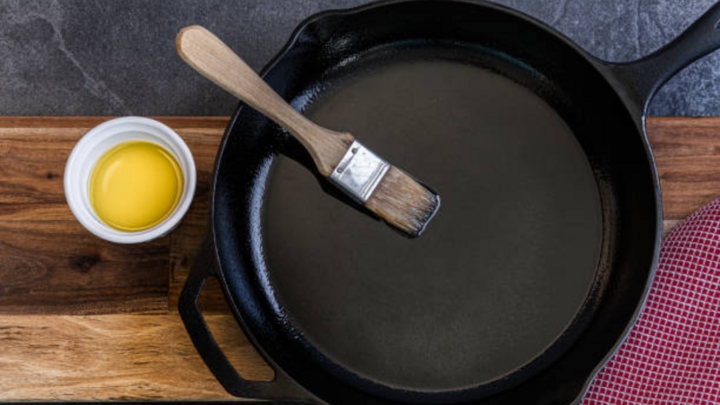This type of pan is made from cast iron, a type of iron-carbon alloy known for its excellent heat retention. Cast iron pans are popular due to their many advantages, including even heat distribution, safety for health, natural non-stick capabilities, and durability.
However, it’s important to know how to properly maintain and care for your cast iron pan to ensure its longevity.
Effective Maintenance of Your Cast Iron Pan
Cast iron pans have unique characteristics and require careful handling during both use and maintenance.
Proper Cleaning of Your Cast Iron Pan After Use
After cooking, remove the pan from the heat and allow it to cool down before cleaning. Use warm water and a soft cloth to clean the pan. For cast iron pans, it’s best to use mild, natural cleaning agents; avoid harsh chemicals or metal scouring pads as they can strip away the natural oil seasoning on the pan’s surface.
If food is stuck on the pan, you can soak it in warm water for a while to soften the residue before cleaning as usual.
Once the pan is clean, dry it thoroughly with a soft, dry cloth to prevent rust from forming due to water residue.
Regular Oil Seasoning for Your Cast Iron Pan
Oil seasoning is crucial for maintaining the natural non-stick properties of your cast iron pan.
Step 1: Clean the pan thoroughly following the above-mentioned steps.
Step 2: Apply a thin coat of cooking oil to the entire surface of the pan, including the inside, outside, and handle. This helps create a protective layer against oxidation and maintains the pan’s non-stick characteristics.
Step 3: Heat the oiled pan in the oven or on the stovetop at a temperature between 180-200 degrees C for about 10-15 minutes. This allows the oil to penetrate the pan’s surface and create a protective layer. The duration may vary depending on the size and volume of your pan.
If using an oven, place the pan upside down to ensure even distribution of oil.

Oil seasoning is an important step in maintaining your cast iron pan. (Photo: Istock)
Store Your Cast Iron Pan in a Dry Place
After cleaning and drying your cast iron pan, store it in a dry place, preferably on a rack or hung up, to prevent contact with moist surfaces, which can lead to rust.
Avoid Cooking Highly Acidic Foods in Your Cast Iron Pan
Highly acidic foods like tomatoes, lemons, and vinegar can break down the pan’s protective layer, so it’s best to limit their use. If you do cook with these ingredients, be sure to re-season the pan with oil afterward.
Proper Usage of Your Cast Iron Pan
Cast iron pans require more careful handling than regular non-stick pans. Here are some tips for using your cast iron pan correctly:
Before adding food, preheat the pan for about 5-10 minutes until it reaches the desired temperature.
Avoid excessive flipping or stirring of food while cooking.
Limit the use of cast iron pans for dishes with strong acidic flavors as they can damage the oil seasoning.
According to VTC News






























